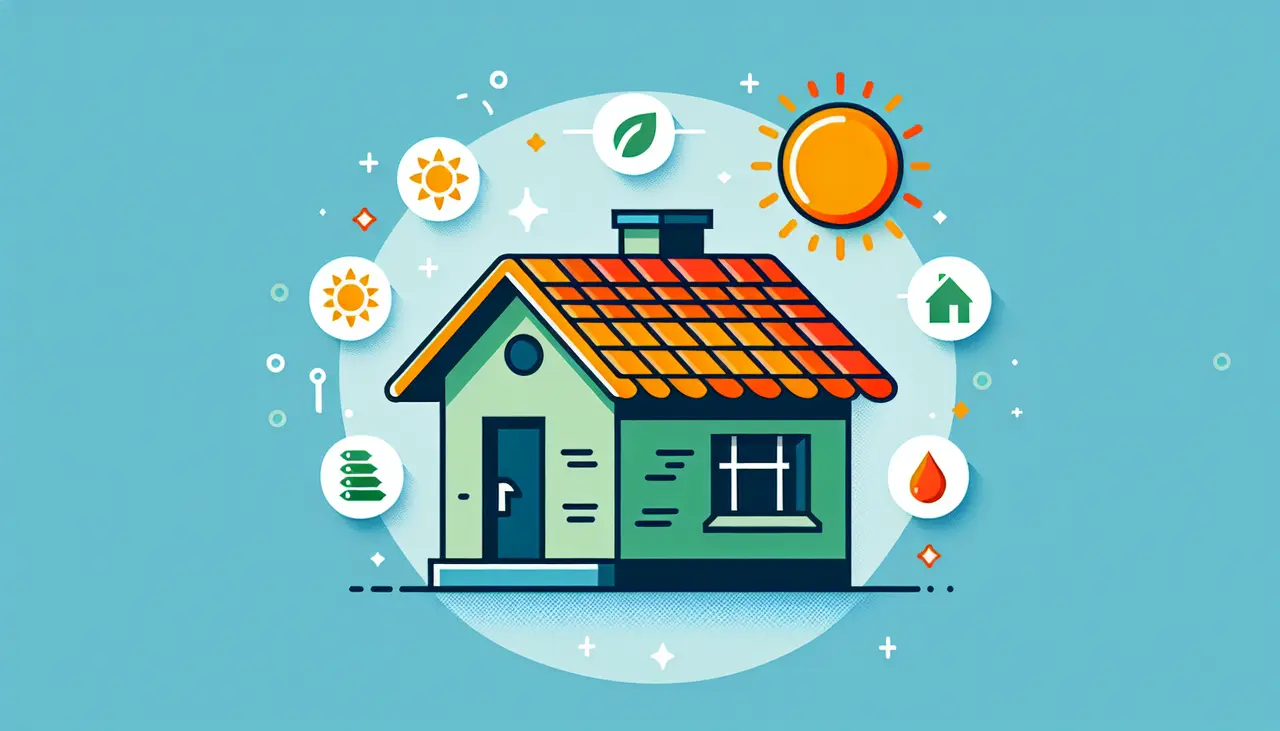In a world increasingly focused on sustainability and energy conservation, homeowners are turning to innovative solutions to reduce their energy bills and carbon footprint. One such solution that combines traditional aesthetics with modern technology is tile roofing. Not only does it add a timeless elegance to any home, but it significantly contributes to energy efficiency. Dive into how this ancient roofing method is making a comeback in the eco-friendly arena.
Understanding the Basics of Tile Roofing
Tile roofing, known for its durability and iconic aesthetic, has been utilized for centuries across various cultures and climates. Made primarily from clay or concrete, tiles are fashioned into interlocking or overlapping designs that create a barrier resistant to weather and external elements. Its enduring popularity stems not just from its visual appeal, but also from its longevity, with lifespans extending over 50 years, making it a cost-effective and sustainable choice for homeowners.
Advancements in manufacturing have further enhanced the intrinsic properties of tile, allowing for improved energy efficiency through innovative shapes and reflective coatings. These advancements ensure that homeowners enjoy not only a roof that stands the test of time but one that actively contributes to reducing heating and cooling costs.
The Energy Efficiency Benefits of Tile Roofing
Tile roofing’s unique ability to improve a home’s energy efficiency lies in its thermal mass, which helps moderate indoor temperatures in both summer and winter. In hot weather, tiles significantly reduce heat transfer into the home, keeping cooling requirements – and costs – lower. Conversely, in cooler seasons, a tile roof acts as an insulating layer, retaining warmth and reducing the need for artificial heating.
Studies have shown that homes with tile roofing require up to 20% less energy to maintain comfortable temperatures compared to other roofing materials. This reduction in energy consumption not only lowers utility bills but also decreases the environmental impact of heating and cooling homes.
How Tile Roofing Reflects and Emits Heat
A key feature contributing to the energy efficiency of tile roofing is its high thermal emittance and solar reflectance. These properties enable tiles to reflect more sunlight and heat away from the home than traditional roofing materials. Furthermore, the natural air ventilation under the tiles creates a heat transfer barrier, providing an additional layer of insulation.
Reflective glazes and finishes can also be applied to tiles, boosting their ability to reflect sunlight and further enhance their cooling effect. This means that even on the hottest days, tile roofs play a crucial role in maintaining a comfortable and energy-efficient living environment.
The Role of Color and Material in Tile Roofing Efficiency
The color and material of tile roofing significantly influence its energy efficiency. Lighter colored tiles reflect more sunlight and heat than darker ones, which absorb heat. Hence, choosing the right tile color can contribute to a cooler attic and, subsequently, a cooler home interior during warm seasons.
While both clay and concrete tiles boast excellent thermal properties, their distinct characteristics and processing methods can affect their efficiency. Clay tiles, typically lighter and more reflective due to their natural color, are ideal for hot climates. Concrete tiles, being denser, offer better thermal mass, making them suitable for maintaining interior temperatures in a broader range of climates.
Installation and Maintenance: Maximizing Your Roof’s Energy Efficiency
Proper installation is paramount to maximizing the energy efficiency benefits of tile roofing. This includes ensuring adequate air ventilation beneath the tiles to facilitate the natural thermal barrier effect. Additionally, periodic maintenance to clean and inspect tiles for damage can prevent degradation of their reflective and insulative properties over time.
Comparing Tile Roofing to Other Roofing Materials
When compared to other roofing materials, tile roofing stands out for its energy efficiency, durability, and low maintenance. Asphalt shingles, while initially cheaper, have a shorter lifespan and offer less insulation. Metal roofing, although reflective, does not provide the same thermal mass benefits. Thus, homeowners looking for a long-term, energy-efficient solution often prefer tile for its unparalleled combination of functionality and aesthetics.
Real Home Examples: Success Stories with Tile Roofing
Across the globe, homeowners have witnessed significant decreases in their energy bills after installing tile roofing. One notable example is a family in Southern California who reported a 25% reduction in their summer cooling costs. Another success story comes from a historic renovation in Florida where the restored tile roof helped maintain consistent indoor temperatures year-round, despite the humid climate.
Empowering Homes with Tile Roofing
As we unravel the layers of benefits offered by tile roofing, its role in enhancing home energy efficiency stands out as a testament to the harmonious blend of tradition and innovation. With the right color, material, and installation practices, tile roofing transcends its primary function of shelter to become a key player in the green building movement. Embracing tile roofing is more than a design choice; it’s a commitment to sustainability and a step towards a more eco-conscious lifestyle. Let the durability, beauty, and energy-saving capabilities of tile inspire your next home improvement project.







